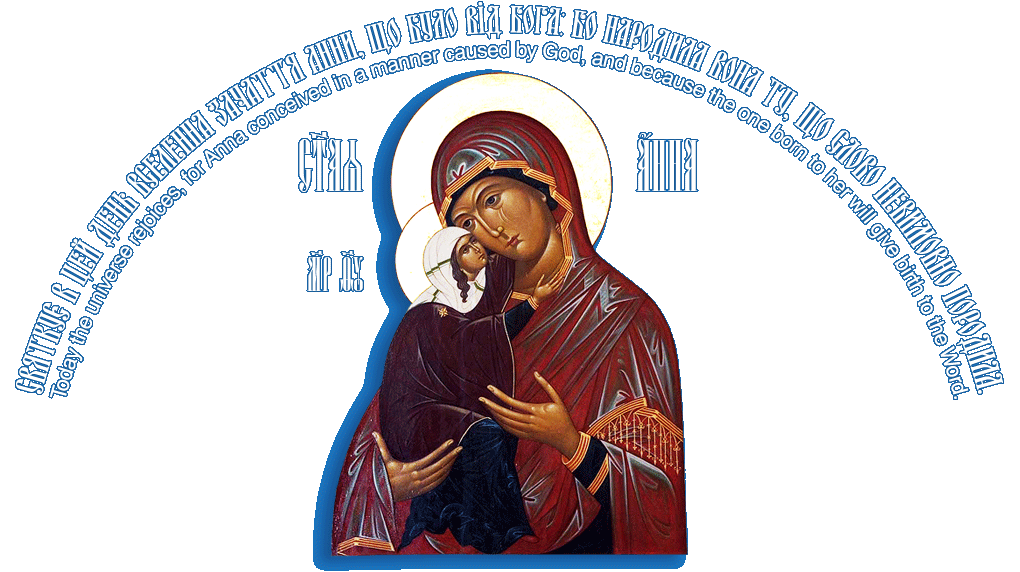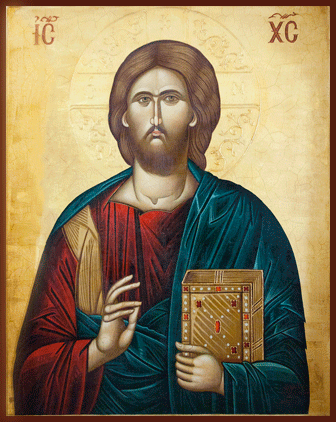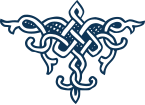Divine Liturgy • Божественна Літургіа
Mt 26:26-30
And as they were eating, Jesus took bread, and blessed it, and broke it, and gave it to the disciples, and said, Take, eat; this is my body.
And he took the cup, and gave thanks, and gave it to them, saying, Drink you all of it;
For this is my blood of the new covenant, which is shed for many for the remission of sins.
But I say unto you, I will not drink again of this fruit of the vine, until that day when I drink it new with you in my Father’s kingdom.
And when they had sung a hymn, they went out into the mount of Olives.
Мт 26:26-30
Як вони ж споживали, Ісус узяв хліб, і поблагословив, поламав, і давав Своїм учням, і сказав: Прийміть, споживайте, це тіло Моє.
А взявши чашу, і подяку вчинивши, Він подав їм і сказав: Пийте з неї всі,
бо це кров Моя Нового Заповіту, що за багатьох проливається на відпущення гріхів!
Кажу ж вам, що віднині не питиму Я від оцього плоду виноградного аж до дня, коли з вами його новим питиму в Царстві Мого Отця. А коли відспівали вони, то на гору Оливну пішли.
What is the Divine Liturgy?
Welcome to the Divine Liturgy!
Thank you for joining us at the Divine Liturgy. This centuries-old service is the foundation of our whole life as believers. We hope this brief explanation will help you to better understand and appreciate its significance in the lives of the Orthodox Christian faithful.
The greatest act of Christian corporate worship is the Holy Eucharist, through which we achieve an intimate union (“communion”) with God and His People. So central is the Eucharist in the life of the Christian, that the first century Christian bishop and martyr, St Ignatius of Antioch, called it “the medicine of immortality and the antidote to death.”
The Orthodox celebration of the Holy Eucharist is called the “Divine Liturgy”. “Liturgy” literally means “the work of the people.” The Orthodox Divine Liturgy is a spiritual ascent. Like the rungs of a ladder, every litany, every hymn, every prayer and Scriptural passage of the Divine Liturgy takes us one step closer to God’s throne. For the person who is entering Liturgy with a receptive and attentive spirit, this mystical ascent is a powerful and life-changing experience.
The Divine Liturgy is not some kind of “holy operetta”, at which the congregation is merely an audience. As we study the prayers and hymns of the Liturgy, we find ourselves repeatedly encountering two words: “we” and “us”. The prayers of the Divine Liturgy are our prayers, the priest saying them on our behalf and the worshipping faithful giving their consent to them with their sung responses.
The Divine Liturgy has two major parts, the “Liturgy of the Catechumens” and “Liturgy of the Faithful”. The key elements of these two are as follows:
The Liturgy of the Catechumens
Before being received into the Church, adult converts to Christianity undergo a “Catechumenate”, during which they learn the basic beliefs and practices of the Faith.
We find in the Liturgy of the Catechumens the teaching elements of the service: the Anthems (Troparia) of the Day, the Scripture readings and the sermon.
“Blessed is the Kingdom”
From the very beginning of the service, the goal of our worship-journey is announced. We are called to make real the Kingdom of God — the place where God’s Will reigns supreme: within ourselves, in our parish community, and in our world.
“Lord, have mercy.”
No one can boast that he or she is “worthy” of God’s grace. We all miss the mark of holiness and perfection to which we are called by God. He continues to be gracious with us because He is merciful. God’s mercy is the starting point our whole life; it cleanses our sins, teaches us His will, and fills us with His life-giving presence.
We acknowledge the central role that God’s mercy plays in our life by repeatedly petitioning Him for it through the words, “Lord, have mercy”. Our prayers are not demands, but pleas made trusting in the Lord’s mercy towards us.
The Antiphons
The first three hymns of the Divine Liturgy are called “antiphons”. On regular Sundays, the first two antiphons are taken from the Old Testament Book of Psalms. The Third Antiphon, coming from the New Testament, is the Beatitudes, in which we are taught us what it means to be a citizen of the Kingdom of God.
The Little Entrance
In ancient times, when the Church was persecuted, the holy objects used for Divine services, such as the books of Scriptures, were kept in hiding to protected them from Roman officials who would confiscate and destroy them. When the objects were needed during the services, they would be brought out in processions. The “Entrances” in our modern liturgies are reflections of this ancient practice.
As the Gospel Book is taken into the Sanctuary — which symbolizes heaven — we are reminded that it is the Word of God which leads us up to Paradise. When the people reverence the Gospel Book with a kiss, it is not the book itself they are honouring. They show their devotion to the One Whom the book proclaims — Jesus Christ, the Word of God.
The Thrice-Holy Hymn
The Thrice-Holy Hymn is taken from several Biblical visions of the angels worshipping around God’s Heavenly Throne. In the Book of Isaiah we read: “And one (angel) cried to another, and said, ‘Holy, holy,, holy, is the Lord of hosts: the whole earth is full of His glory.” (6:3) A similar account can be found in the fourth chapter of the Book of Revelation.
The Thrice-Holy Hymn is sung twice and mentioned one other time during the Liturgy; each reference is at a key moment in our liturgical journey. As we join the angels in their eternal hymn we climb higher and higher, mystically approaching our final destination: the Blessed Kingdom of God.
The Liturgy of the Faithful
In the Ancient Church, only baptized believers (the “Faithful”) were allowed to take part in the celebration of the Holy Eucharist. In these times of Imperial discrimination and persecution, it was necessary to guard the Christ’s Holy Things from those seeking to defile and destroy them. When the Church was no longer under persecution the practice of allowing only baptized believers to be present for the Eucharist fell into disuse.
The Great Entrance
As with the Liturgy of the Catechumens, the Liturgy of the Faithful begins with an Entrance. The bread and wine offered in the Eucharist are brought forth and placed upon the altar. During the Great Entrance, the priest prays for our Church and civil authorities, and our parish members, both living and departed, proclaiming, “May the Lord God remember (them) in His Kingdom.” This prayer is based on the words of the repentant thief who was crucified with Jesus: “And he said to Jesus, ‘Remember me when you come as King.’ And Jesus answered him, and said, ‘Very truly I say to you, today you shall be with me in Paradise.'” (Luke 23:42-43)
The Creed
The Creed was written at the first two Ecumenical Councils in Nicea (325) and Constantinople (381). This document contains the fundamental beliefs of the Christian Church.
The Anaphora
The Anaphora is a long prayer set up in the form of a dialogue between clergy and laity. In this prayer we celebrate God’s works of salvation for the world, which culminate in the saving mission of His Only-Begotten Son, our Lord Jesus Christ. We also thank God for His great gift of the Holy Eucharist — in which Christ becomes physically present among His people throughout history, and is tangibly received into their lives through the transformation of bread and wine into our Lord’s Flesh and Blood.
Holy Communion
All of our prayers and hymns are to fulfilled in partaking of Christ’s Most-Holy Body and Precious Blood. Our spiritual ascent is then complete, and all that Jesus promises us in the Eucharist becomes ours: “Whoever eats My Flesh and drinks My Blood has eternal life, and I will raise him to life on the last day. For my Flesh is real food, and my Blood is real drink. Whoever eats my flesh and drinks my Blood lives in Me, and I live in them.” (John 6:54-56)
In Orthodox practice, participation in Communion is understood to be the main mark of membership in the Church. Consequently, only those who, through baptism and/or chrismation, are formally members of the Orthodox Church are permitted to receive Holy Communion in the Orthodox Church. Our intention in this practice is not to make anyone feel excluded, but to honour a centuries-old precept that has its roots in the earliest days of the Church’s history.
See also:
• Orthodoxy • Православіє
• Great Vespers: Evening Worship of the Orthodox Church
• The Symbolism of the Eastern Orthodox Marriage Service
• In Praise of the “New Eve”: The Mother of God and the Dignity of Women
• Angels: The Eastern Orthodox Teaching on the “Body-less Powers”


